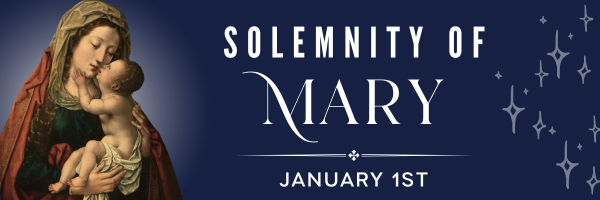We ask you, urgently: don't scroll past this
Dear readers, Catholic Online was de-platformed by Shopify for our pro-life beliefs. They shut down our Catholic Online, Catholic Online School, Prayer Candles, and Catholic Online Learning Resources essential faith tools serving over 1.4 million students and millions of families worldwide. Our founders, now in their 70's, just gave their entire life savings to protect this mission. But fewer than 2% of readers donate. If everyone gave just $5, the cost of a coffee, we could rebuild stronger and keep Catholic education free for all. Stand with us in faith. Thank you.Help Now >
Sardica
FREE Catholic Classes
A titular metropolitan see of Dacia Mediterranea. The true name of the city (now Sophia, the capital of Bulgaria ) was Serdica, the city of the Serdi, a Thracian people defeated by Crassus in 29 B.C. and subjected to the Kingdom of Thrace, the vassal of Rome. When this kingdom was suppressed in 49 B.C. the Serdi were included in the Roman Province of Thracia. The Emperor Trajan transformed the borough of the Serdi into a city which he called Ulpia Serdica. In 275 Aurelian caused Dacia beyond the Danube to be evacuated, and transplanted to Moesia and Thracia the soldiers and colonists who were faithful to the Roman cause. The country occupied by these immigrants formed the new Province of Dacia, Sardica being included in this province (Homo, "Essai sur le règne de l'empereur Aurélien," 313-21). Later, Diocletian divided Dacia into Dacia Ripensis and Dacia Mediterranea. Sardica was the civil and ecclesiastical metropolis of the latter. Gallienus established a mint at Sardica, and Constantine the Great, who was born in the region, contemplated making it his capital. Ecclesiastically, Sardica belonged to the Patriarchate of Rome until 733, when it was annexed to that of Constantinople until 809. Upon the conversion of the Bulgarians, in 865, Sardica was one of the first cities which had a see. Until 1204 it was included in the Graeco-Bulgarian Patriarchate of Achrida, until 1393 in the Bulgarian Patriarchate of Tirnovo, and until 1872 in that of Constantinople. Since then Sardica, or, as it is now called, Sophia, belongs to the national Church of Bulgaria. The earliest known bishop is Protagenes, who assisted at the Council of Nicaea in 325; the best known is Bonosus, who shortly afterwards attacked the virginity of the Blessed Virgin. (For the council held here in the fourth century see SARDICA, COUNCIL OF.)
Although taken by Attila and often destroyed by the Slavs, the town remained under Byzantine dominion until 809, when it was captured by the Bulgars, who changed its name to Sredetz, later transformed by the Greeks into Sraditza and Triaditza. Again occupied by the Greeks from 1018 to 1186, it enjoyed great prosperity; a section of the population was Paulician or Manichaean. After some years of troubles it again fell into the power of the Bulgars. Its present name of Sophia dates from the Middle Ages, though the precise date of its first use cannot be assigned. In the sixteenth century Sredetz and Sophia were used simultaneously. In 1382 the city was captured by the Turks, and for more than four centuries it was the residence of the beglerbeg , or governor general, of Rumelia. In 1878 Sophia was chosen as the capital of the Principality of Bulgaria, and since 1908 has been the capital of the Kingdom of Bulgaria. A vicariate Apostolic was created here at an early date and confided to the Franciscans. In 1610 Rome reestablished the See of Sophia, which in 1643 was made archiepiscopal. It was suppressed towards the end of the eighteenth century, because the Catholics were persecuted by the Turks and had emigrated, mostly to Austria and Russia. Relative peace was restored in 1835, and Rome confided the direction of the Catholics to the Redemptorists, under a vicar Apostolic who had not received episcopal consecration. The Redemptorists were replaced by the Capuchins in 1841, their superior being consecrated bishop in 1848. At present an archbishop is at the head of this vicariate Apostolic. Sophia has 105,000 inhabitants, of whom a small number are Catholics. The Christian Brothers have a school there, and the Sisters of St. Joseph of the Apparition three convents.
Join the Movement
When you sign up below, you don't just join an email list - you're joining an entire movement for Free world class Catholic education.
An Urgent Message from Sister Sara – Please Watch
- Advent / Christmas
- 7 Morning Prayers
- Mysteries of the Rosary
- Litany of the Bl. Virgin Mary
- Popular Saints
- Popular Prayers
- Female Saints
- Saint Feast Days by Month
- Stations of the Cross
- St. Francis of Assisi
- St. Michael the Archangel
- The Apostles' Creed
- Unfailing Prayer to St. Anthony
- Pray the Rosary
![]()
Copyright 2026 Catholic Online. All materials contained on this site, whether written, audible or visual are the exclusive property of Catholic Online and are protected under U.S. and International copyright laws, © Copyright 2026 Catholic Online. Any unauthorized use, without prior written consent of Catholic Online is strictly forbidden and prohibited.
Catholic Online is a Project of Your Catholic Voice Foundation, a Not-for-Profit Corporation. Your Catholic Voice Foundation has been granted a recognition of tax exemption under Section 501(c)(3) of the Internal Revenue Code. Federal Tax Identification Number: 81-0596847. Your gift is tax-deductible as allowed by law.








